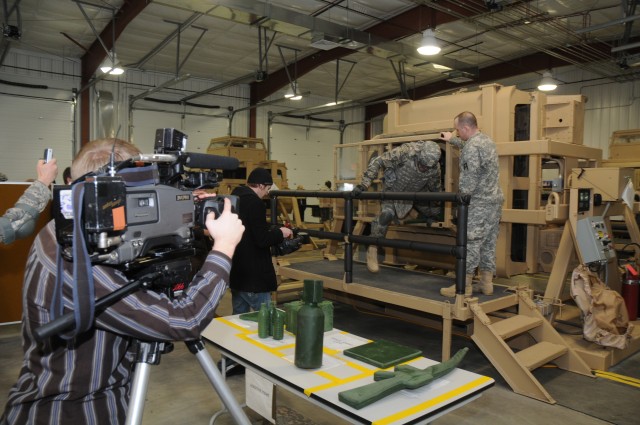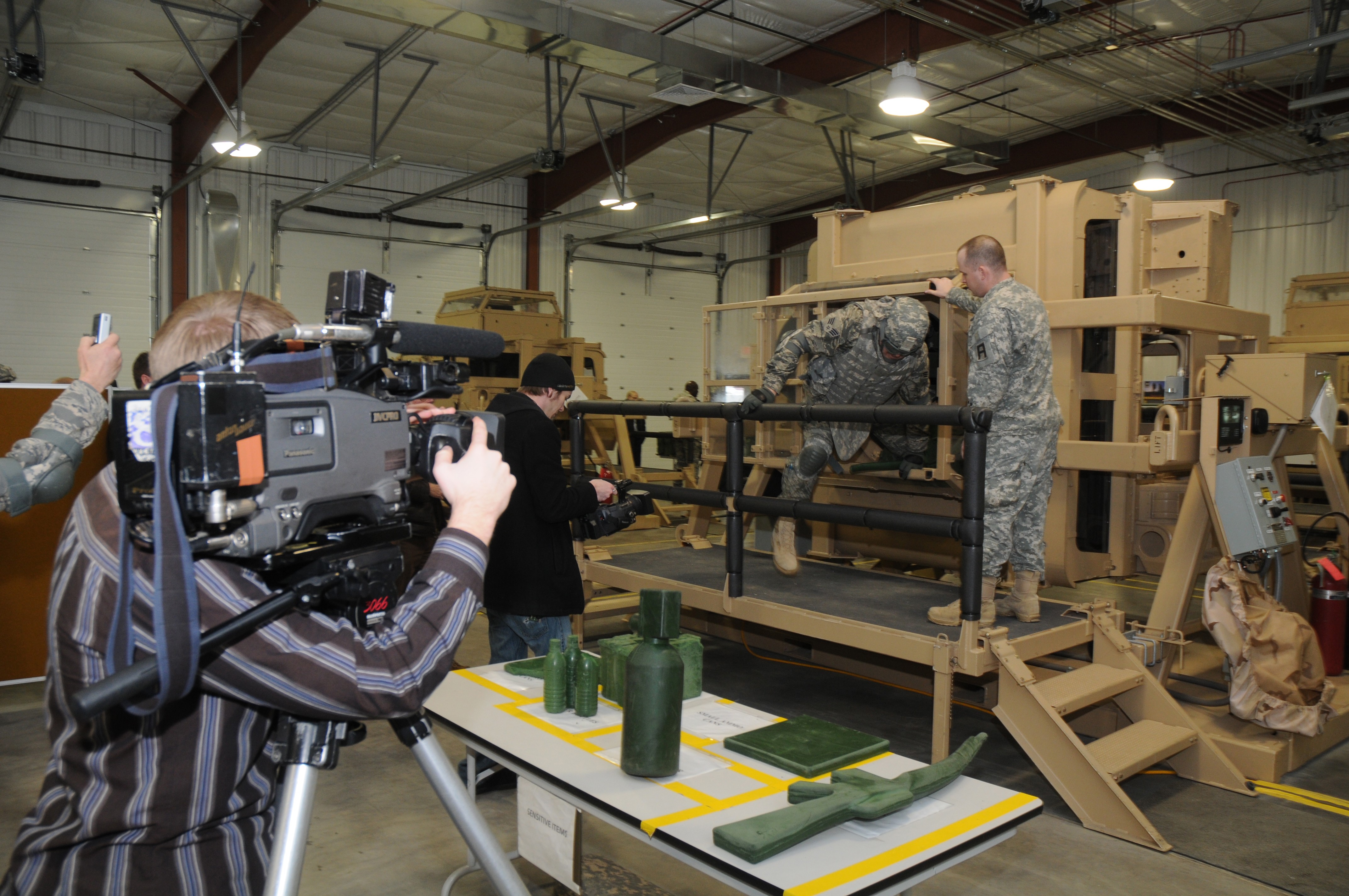
FORT McCOY, Wis. -- Three physical therapists from the Tomah Veterans Affairs (VA) Medical Center visited and observed the Humvee Egress Assistance Trainer (HEAT) training session at Fort McCoy to learn how to better treat servicemembers for injuries sustained in a Humvee rollover.
The training session conducted by the 1st, 340th Training Support Battalion, 181st Infantry Brigade was for personnel training to deploy to Southcentral Asia in support of Operations Iraqi Freedom and Enduring Freedom.
The HEATs are Humvee cabins, minus engines, transmissions and wheel assemblies, that can be rotated 360 degrees to simulate a rollover of that vehicle. The occupants of the vehicle are taught how to respond in that event.
Kris Valest, Tomah VA physical therapist and supervisor of physical medicine and rehabilitation services, said the goal in visiting the training at Fort McCoy was to better understand the biomechanics and forces a Soldier receives in a rollover.
"We were able to see some of the side-to-side motion and different angles that the head, neck and spine go through in the rollover action," she said.
Kelly Joyce, also a physical therapist, said she learned about the types of injuries that can be generated in a rollover.
"I learned a lot about the jobs and physical positions of Soldiers in a Humvee, such as where a turret gunner sits and is positioned on the supporting strap, and similarly for the driver and passengers."
"It is amazing that the door of an armored Humvee weighs 250 pounds and that a Soldier may have to push or lift that door to exit the vehicle," Joyce said. The therapists also were shown that Soldiers exiting a partially or totally rolled-over vehicle also may face incoming fire from a threat situation.
"It is very easy to sustain injuries in just the exiting part of the situation," Joyce said. "It is difficult to understand what a Soldier is going through unless you see it close-up, like we did at Fort McCoy."
Valest said therapists "try to reverse the action sustained in the rollover, to pinpoint the possible types of therapy to help Soldiers get better faster."
Many rollover injuries can include musculo-skeletal pain, according to Valest. But she said flying objects inside the Humvee, including rifles, ammunition, radios, personal gear, etc., easily can cause injuries.
Valest said the collaboration between the Department of Defense and the Department of Veterans Affairs benefits the agencies and military personnel receiving treatment.
"We will be sending (the information we learned from the training session) into the national VA system so many more people will learn from it," Valest said.

Social Sharing